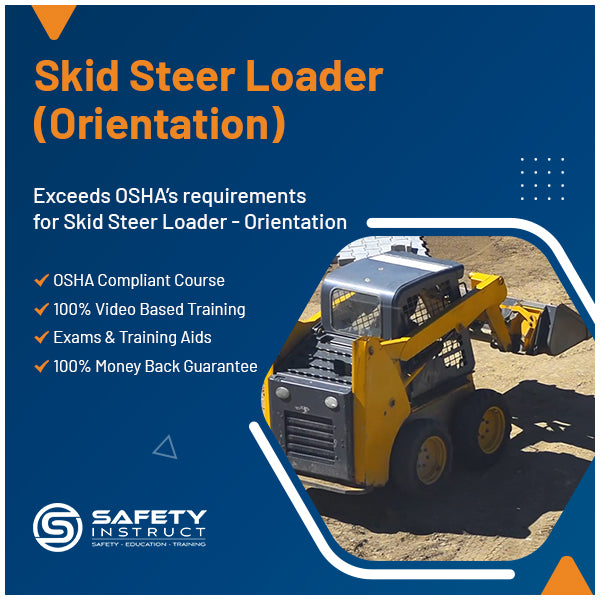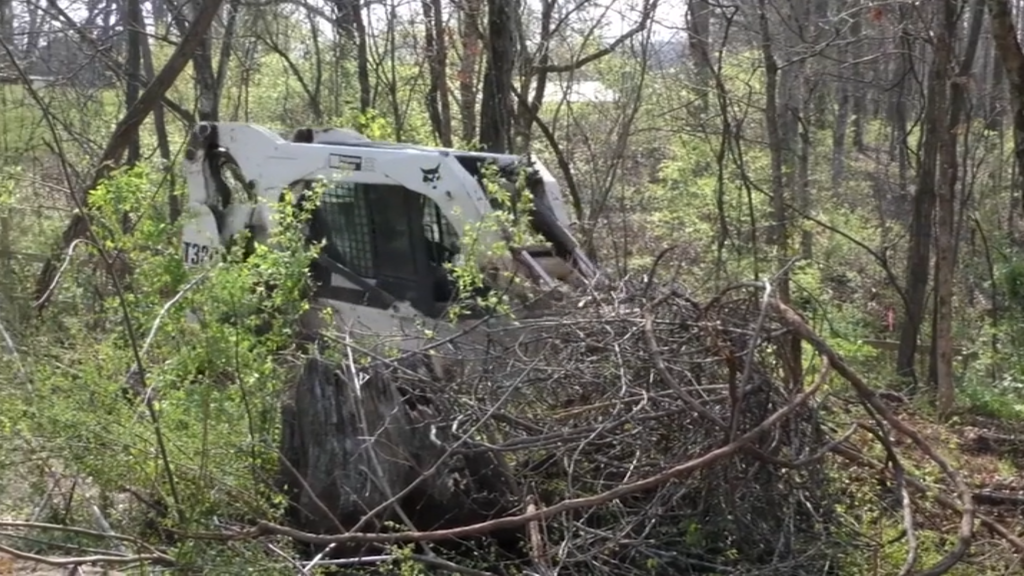No Products in the Cart
Click Here to Schedule a FREE Consultation
Phone: 866-943-6887 Email: sales@safetyinstruct.com



Skid Steers. You will see them at almost every construction site, from large commercial sites to small backyard sites. Skid Steers are compact, versatile pieces of equipment that can make tight turns and accommodate numerous attachments. They are very handy and are excellent choices for clearing debris, moving materials and maneuvering through busy landscapes. But they can also be dangerous, especially when the safety features designed to keep you safe have been tampered with or disabled, which, unfortunately, is often the case.
What are Skid Steers?
A skid steer is a small rigid-framed, engine powered machine that has lift arms on the sides of the operator cage. These arms extend out in front of the operator and connect to various attachments. The pivot points controlling the arms are behind the operator's head. Skids Steers are valuable pieces of equipment because the two sets of wheels can operate independently of each other, allowing the machine to "skid." They can also turn in a tight circle. However, having the lift arms at the side, means the operator has to enter and exit the skid by crawling out through the front, which is done by stepping over the controls and attachments. In many cases, levers or switches are hit accidentally, causing the skid arms and attachments to move. Accidental and unexpected movement of the arms and attachments can trap, crush, and kill workers.
Safety Features
Because entering and exiting a skid requires the operator to crawl over the attachments and into the cab, most Skid Steers have an Interlock Control System in place. These systems prevent the skid from operating until it senses a driver in the driver's seat, that a seat belt has been fastened, and that a restraint bar has been engaged. These are critical features of a skid, but are often disabled as they can be inconvenient for the operator. However, almost all skid steer accidents and deaths occurred as one was entering or exiting a skid and accidentally tripped a switch in the process.
Entry & Exit
Skid Steers are beneficial to workers due to their compact design. By having the lift arms alongside of the operator cage, the skid can easily maneuver in tight spaces where other pieces of machinery cannot. Differential steering, where the wheels can operate independent of each other, allows the skid to turn in a circle while remaining in one spot. These are very handy machines to have on construction sites. However, to get into a skid, one must step over the attachment and into the cab, stepping through the controls in the process. This should only be done if the attachment is flat on the ground and the skid turned off with no keys in the ignition. The Interlock Control System, which prevents the machine from operating unless conditions are met, must never be tampered with. Skid Steer accidents and deaths are almost always due to this system being disabled.
Skid Steer Maintenance
You must never clean a skid while the machine is in operation. If the window gets dirty or brush gets caught in the arms, you must lower the attachment, turn off the machine, remove the key and engage the parking brake before you make any attempt to clean the machine. Just like entering and exiting, accidentally tripping a switch as you "reach through" to clean can engage the lift arms, which will crush any object in their way. If you must have the arms up for a maintenance task, make sure they are held in place by supports provided by the skid steer manufacturer. Do not use homemade supports or supports designed for a different machine. ONLY the supports designed to go with the skid are safe.
Accident Prevention
Skid Steer accidents do not have to happen. There are many things you can do to avoid them. You should always stay up to date on training, repeating it every few years, regardless how often you drive a skid. Never tamper with the Interlock Control System. Know your attachments and how they affect the movements of the skid. Always enter and exit a skid the right way, and only after making sure the skid is off, the attachment lowered, and locking systems in place. Never clean a skid while it is in operation.


